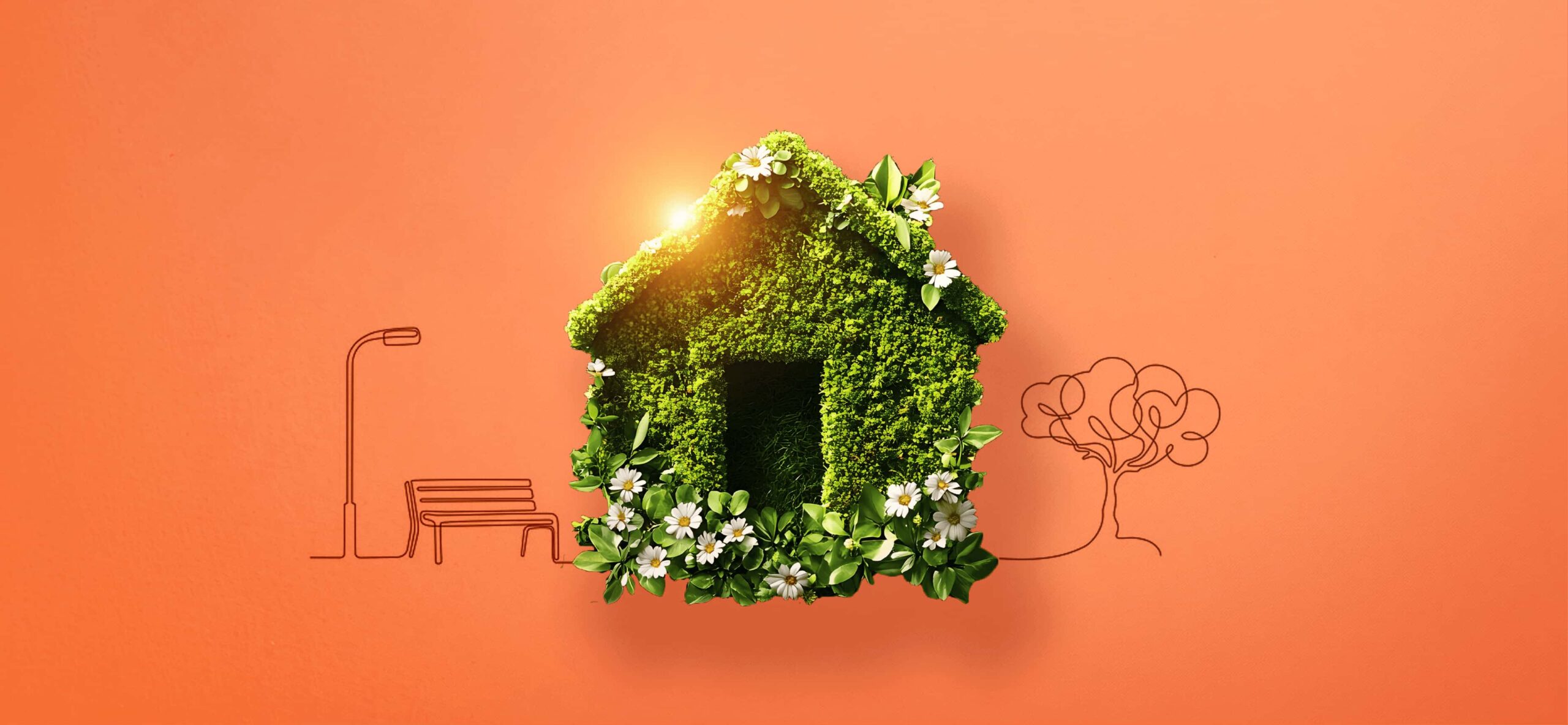Why Are Homebuyers Opting for Eco-Friendly Homes?

Lately, the Indian real estate market has seen a growing trend toward eco-friendly homes. These green homes are not
just a fad but a significant shift in how homebuyers perceive and prioritize sustainability. Eco-friendly homes,
designed with energy efficiency and environmental conservation in mind, offer long-term benefits that extend beyond
the immediate advantages of conventional homes. This blog looks into the reasons behind the rising popularity of
environmentally friendly homes among Indian homebuyers, highlighting the principles, features, and benefits of green
living.
By embracing green homes, we not only enhance our living standards but also play a pivotal role in conserving our planet for generations to come.
For more information on real estate properties in India and to find the best properties, consider exploring resources like BeyondWalls, one of the best online property portals in India . These platforms provide valuable insights and listings that can help you make informed decisions for a sustainable future.
Understanding Green Homes
Green homes are residences designed and built to minimize environmental impact and promote sustainable living. They incorporate energy-efficient systems, eco-friendly materials, and sustainable design principles to reduce carbon footprints and conserve natural resources.Principles of Green Homes
- Energy Efficiency: Utilizing energy-efficient appliances, lighting, and HVAC systems to reduce energy consumption.
- Eco-friendly Materials: Using sustainable and recyclable materials like bamboo, reclaimed wood, and recycled steel.
- Sustainable Design: Incorporating passive solar design, natural ventilation, and green roofing to enhance energy efficiency.
Benefits of Green Homes
- Long-term Cost Savings: Reduces energy bills and maintenance costs because of the durability and efficiency of sustainable materials and technologies.
- Environmental Impact: Lower carbon emissions, reduced waste, and conservation of water and energy resources.
- Healthier Living Environment: Improved air quality and reduced exposure to harmful chemicals. Compared to conventional buildings, green homes offer substantial long-term savings and environmental benefits,making them an attractive choice for modern homebuyers.
Modern Challenges and Solutions
India’s rapid urbanization and population growth present significant challenges for housing. Conventional construction methods and materials like concrete contribute to environmental degradation and are unsustainable in the long run.Impact of Conventional Materials
- Environmental Degradation: Concrete production emits large amounts of CO2 and depletes natural resources.
- Waste Generation: Construction waste from conventional materials often ends up in landfills, contributing to pollution.
Modern Technologies and Materials
- Prefabricated Construction: Using prefabricated components to reduce construction time and waste.
- Green Building Materials: Innovations in materials such as bamboo, agricultural waste products, and recycled plastics offer sustainable alternatives that are the future of green building.
Green Elements Suitable for Your Home
Incorporating green elements into your home is essential for sustainable living in India. Key materials and practices include:- Bamboo Homes Bamboo is a flexible and sustainable material known for its strength and rapid growth rate. It can be used in flooring, walls, and furniture, providing an eco-friendly alternative to traditional timber.
- Agri-Waste Elements Utilization of agricultural waste, like rice husk and coconut shells, in construction materials reduces waste and promotes recycling. These materials are often used in insulation, roofing, and composite panels.
- Sustainable Building Practices
- Water Conservation: Installing rainwater harvesting systems and low-flow fixtures.
- Energy Conservation: Using solar panels and energy-efficient appliances.
- Waste Management: Implementing recycling and composting systems within the home.
Features and Innovations in Green Homes
Green homes are characterized by several innovative features designed to promote sustainability and energy efficiency.-
Key Features
- Energy-Efficient Appliances: Devices that consume less energy and reduce utility bills.
- Rainwater Harvesting Systems: The collection and storage of rainwater for domestic use, reducing dependence on municipal water supplies.
- Passive Solar Design: Designing homes to maximize the natural light and heat, reducing the need for artificial lighting and heating.
-
Innovations in Sustainable Architecture
- Green Roofing: Installing vegetation on rooftops to provide insulation and reduce urban heat islands.
- Smart Home Technologies: Integrating smart thermostats, lighting, and security systems to optimize energy use.
- Biophilic Design: Incorporation of natural elements like plants and water features into home design to enhance well-being.
-
Environmental and Economic Benefits
Green homes offer numerous environmental and economic plus points that make them an appealing option for
homeowners.
-
Environmental Benefits
- Air and Water Conservation: Reducing pollution and conserving natural resources through sustainable practices.
- Reduction in Greenhouse Gas Emissions: Lowering carbon footprints by using renewable energy sources and efficient systems.
-
Economic Benefits
- Cost Savings: Significant reductions in utility bills and maintenance costs due to durable materials and energy-efficient technologies.
- Health Benefits: Healthier indoor environments with improved air quality, reducing medical expenses related to respiratory issues.
Green Homes Certification and Standards in India
To ensure the environmental performance and sustainability of green homes, several certification systems are in place.-
Prominent Certification Systems
- Indian Green Building Council (IGBC): Offers certifications like IGBC Green Homes and IGBC Green Townships.
- Leadership in Energy and Environmental Design (LEED): A certification that is Internationally recognized and renowned with a strong presence in India.
-
Achieving and Maintaining Certification
- For Developers: Incorporating sustainable design and construction practices from the planning stage.
- For Homeowners: Adopting energy-efficient appliances, renewable energy systems, and sustainable materials.
Conclusion:
Eco-friendly homes are a crucial solution to India’s environmental smand housing challenges. By prioritizing sustainable building practices, developers and homeowners can contribute to a greener future while enjoying the long-term benefits of green living. As awareness of the environmental effect of conventional housing grows, the demand for eco-friendly homes is expected to rise, making them a viable option for sustainable living and future investments.By embracing green homes, we not only enhance our living standards but also play a pivotal role in conserving our planet for generations to come.
For more information on real estate properties in India and to find the best properties, consider exploring resources like BeyondWalls, one of the best online property portals in India . These platforms provide valuable insights and listings that can help you make informed decisions for a sustainable future.
Thank you. Your comment will be visible after an approval.
Comments (0)
No comments found.Featured Articles

Proven Framework for High Velocity Launches
Recent Articles

2BHK vs 3BHK in West Pune: What Should You Choose and Where?

Punawale Real Estate 2025: The Data Homebuyers & Investors Should Not Ignore

How Consumers Are Driving Up Real Estate Prices for Themselves

Pune 2 BHK Guide: What ₹70–80 Lakhs Gets You in Baner, Wakad & Camp

Why Autadwadi Handewadi is Pune’s Top Choice for Homebuyers Near IT Hubs

Add your comment